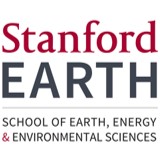Tree species explain only half of explained spatial variability in plant water sensitivity
Published in Global Change Biology, 2024
We seek to understand the relative importance of the dominant species for regional-scale variations in woody plant responses to water stress.
Recommended citation: Konings, A. G., Rao, K., McCormick, E. L., Trugman, A. T., Williams, A. P., Diffenbaugh, N. S., Yebra, M., & Zhao, M. (2024). Tree species explain only half of explained spatial variability in plant water sensitivity. Global Change Biology, 30, e17425. https://onlinelibrary.wiley.com/doi/full/10.1111/gcb.17425

 Predicted vegetation wetness over western US using remote sensing and deep learning.
Predicted vegetation wetness over western US using remote sensing and deep learning. 





